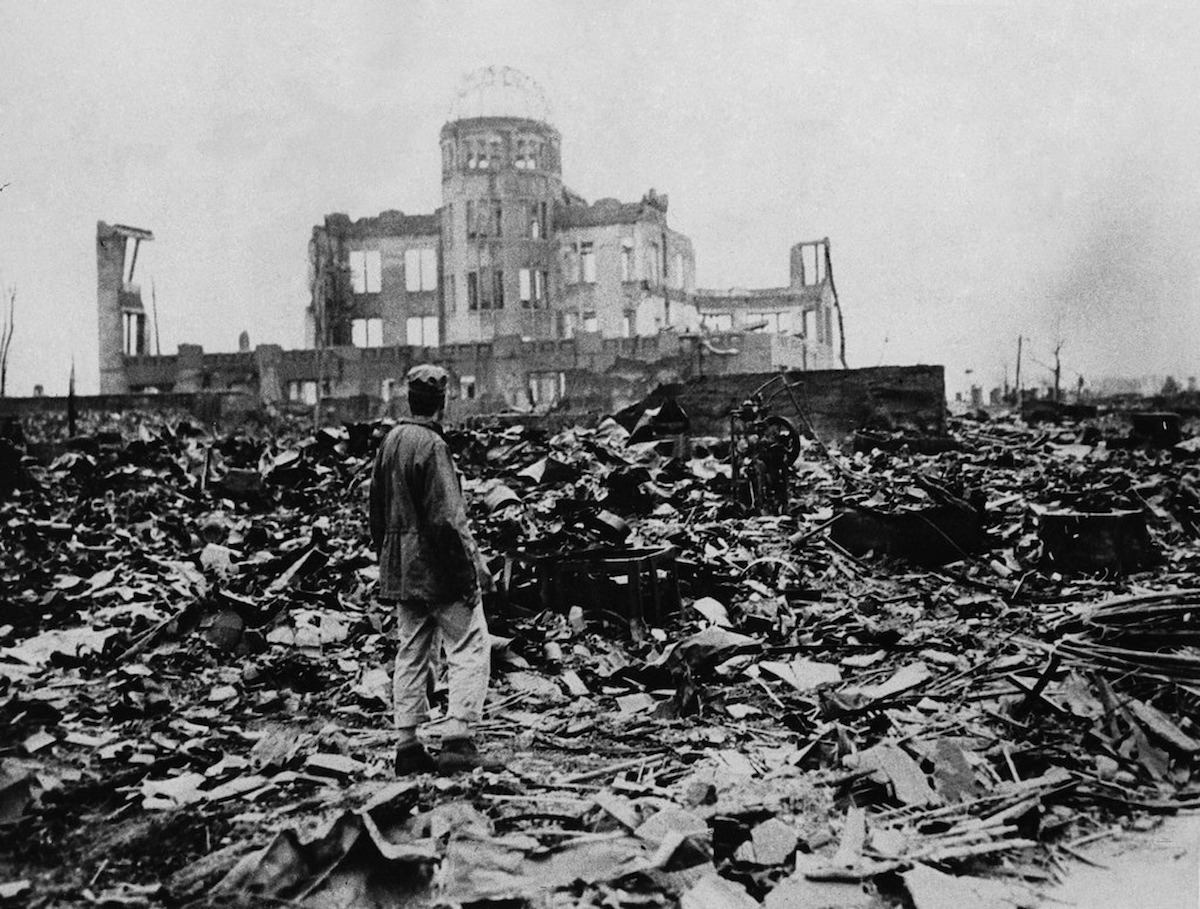
President Obama’s visit to Hiroshima, nearly 71 years after it was destroyed by the first atomic bomb, inevitably raises once again the questions of why the United States dropped that bomb, whether it was necessary to convince Japan to surrender and whether it saved lives by making it unnecessary to invade the Japanese home islands.
Beginning in the 1960s, when the Vietnam War disillusioned millions of Americans with the Cold War and the U.S. role in the world, the idea that the bombing of Hiroshima—and the subsequent bombing of Nagasaki—was not necessary gained ground. Led by the economist Gar Alperovitz, a new school of historians also began arguing that the bomb was dropped more to intimidate the Soviet Union than to defeat the Japanese. By 1995, Americans divided so sharply on the necessity and morality of dropping the bombs that a 50th anniversary exhibit at the Smithsonian had to be repeatedly altered and eventually drastically scaled back. Passions have cooled as the generation that fought the war has left the scene and academics have turned to other topics, but the President’s visit is bound to reignite them.
MORE: Why It Took So Long for a U.S. President to Visit Hiroshima
Because passion, not reason, has largely driven the debate, too little attention has been paid to a number of serous scholarly works and documentary releases that have discredited many of the new theories about the use of the bomb. As early as 1973, Robert James Maddux showed that Alperovitz’s argument about the bomb and the USSR was almost entirely without foundation, but Maddox’s work had little impact on the public perception of the event.
Still, those who have continued to argue that Moscow, not Tokyo, was the real target of the A-bombs, have had to rely upon inferences about what President Truman and his top advisers might have been thinking, since there has never been documentary proof that they really felt this way. Meanwhile, other studies have made critical contributions about other aspects of the controversy. Thanks to them, we can see clearly that the Japanese were not at all ready to surrender on American terms before the two bombs were dropped, that they were planning the most determined resistance possible to the planned U.S. invasion, that they had managed to prepare for it extensively, and that the consequences of a longer war could have been far more serious for both the Japanese and U.S. forces than the two bombs.
MORE: See the Original Operations Orders for the Atomic Bombings of Hiroshima and Nagasaki
The United States’ objective in the war had been laid down publicly by President Roosevelt at the Casablanca Conference in early 1943: the unconditional surrender of all its enemies, allowing both for the occupation of their territory and the imposition of such new political institutions as the Allies saw fit. In the early summer of 1945 those terms had indeed been imposed upon Germany. But as a brilliant 1999 study by Richard B. Frank, Downfall, showed, the Japanese government—while well aware that it could not win the war—was not at all ready to accept such terms. They particularly wanted to avoid an American occupation of Japan, or any change in their political institutions.
Knowing that U.S. forces would have to invade the island of Kyushu before moving to Honshu and Tokyo itself, the Japanese planned a huge, costly battle on Kyushu that would inflict enough casualties to convince Washington to compromise. More importantly, as an excellent study of U.S. intelligence showed in 1998, the Japanese had in fact managed to reinforce Kyushu very heavily, and military authorities in Washington knew it. By the end of July 1945, military intelligence estimates of Japanese forces on Kyushu had risen substantially, and Army Chief of Staff General George C. Marshall was sufficiently alarmed that, by the time the bomb was dropped on Hiroshima, he was suggesting to General MacArthur, who would command the invasion, that he reconsider the invasion of Kyushu and possibly abandoning it entirely.
Get your history fix in one place: sign up for the weekly TIME History newsletter
As it turned out, the combination of the bombs on Hiroshima and Nagasaki and the entry of the USSR into the war against Japan—all within a period of just three days—convinced the Emperor and the Japanese government that surrender was the only option. More and more evidence has shown, however, that Japan would not have surrendered on American terms before an invasion took place in the absence of the atomic bombs.
The United States, then, dropped the bombs to end the war that Japan had unleashed in Asia in 1931 and extended to the United States at Pearl Harbor—and thereby probably avoided an invasion that would have meant hundreds of thousands of casualties. Frank also argued in Downfall that many thousands of Japanese civilians would also have starved in the meantime.
That does not mean that we need not ask ourselves about the moral implications of destroying two whole cities with nuclear weapons. Nothing comparable has happened since—perhaps because of the deterrent effect on all sides of seeing what atomic weapons could do—and we must all hope that it will never happen again.
MORE: See What the Only Hiroshima Building to Outlast the Atomic Bomb Looks Like Today
But our quarrel is not really with the use of the atomic bombs specifically, but with the attitude towards human life—including civilian life—that had grown up during the Second World War. Years before Hiroshima and Nagasaki, British and American strategists had adopted the burning of entire cities as a legitimate means of trying to defeat Germany and Japan. The firebombings of Hamburg, Dresden, Tokyo and other Japanese cities had resulted in casualties roughly equal to or greater than the atomic bombings of those two cities. No historian, to my knowledge, has ever tried to trace how the idea that targeting whole cities and their populations was a legitimate tactic became orthodoxy in the British and American air forces, but it remains a very sad commentary on the ethos of the twentieth century. In any event, they had crossed that threshold well before Hiroshima and Nagasaki. The dropping of the bombs horrifies us today, but at the time, it was viewed as a necessary step to end a terrible war as quickly and with the least loss of life as possible. Careful historical research has validated that view.

Historians explain how the past informs the present
David Kaiser, a historian, has taught at Harvard, Carnegie Mellon, Williams College, and the Naval War College. He is the author of seven books, including, most recently, No End Save Victory: How FDR Led the Nation into War. He lives in Watertown, Mass.
More Must-Reads From TIME
- The 100 Most Influential People of 2024
- Coco Gauff Is Playing for Herself Now
- Scenes From Pro-Palestinian Encampments Across U.S. Universities
- 6 Compliments That Land Every Time
- If You're Dating Right Now , You're Brave: Column
- The AI That Could Heal a Divided Internet
- Fallout Is a Brilliant Model for the Future of Video Game Adaptations
- Want Weekly Recs on What to Watch, Read, and More? Sign Up for Worth Your Time
Contact us at letters@time.com